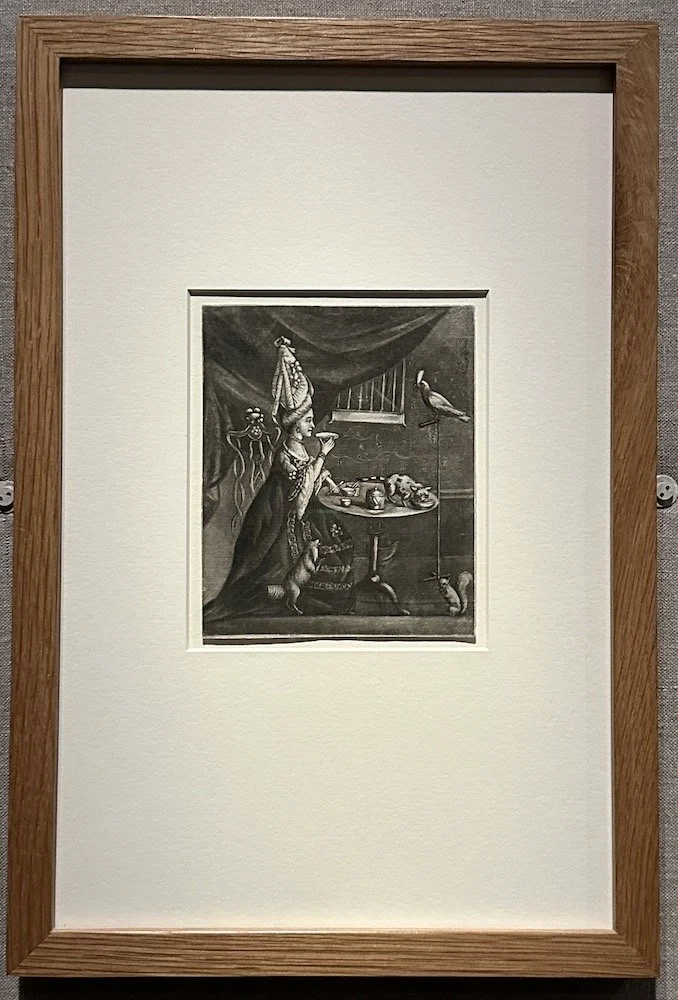Chinoiserie and Tea History
I went to visit the Met Museum specifically to see an exhibit I have been anticipating since the winter: Monstrous Beauty: A Feminist Revision of Chinoiserie.
I’ve been pumped to view this exhibit for months because it was an intersection of so many of my interests and topics covered in previous writing and I knew it would have to collide with tea and tea history.
As many tea enthusiasts know, the history and appreciation of tea is intertwined with the enjoyment and history of porcelain particularly porcelain teaware* of teacups and teapots.
Teacup and saucer, ca 1700, made in Jingdezhen, China for European market, Metropolitan Museum of Art Collection this was displayed in the exhibit but the photo I took in the case is not as good as the official catalog photo above.
Yes, Tea was a Big Part of the Exhibit
Tea front and center in an intro to a section of the Monstrous Beauty: A Feminist Revision of Chinoiserie exhibit
Indeed there were many artifacts and images depicting tea drinking and early export teaware that reflected Chinese teacup shapes 🍵 before European tea culture added handles to teacups ☕ that I have never seen before gathered together in this exhibit and I excerpted some highlights in the gallery below.





What Is Chinoiserie?
Here is a great definition of Chinoiserie from the exhibit:
“This decorative style—known as Chinoiserie—originated hundreds of years ago in Europe, where elite collectors developed an obsession with porcelain and fantasized about its site of origin: China.
By the 1700s, European-made vases, plates, and teacups depicted invented visions of the East—natural landscapes cast on artificial surfaces.”
Another great quote about what Chinoiserie has meant in the exhibit:
“When porcelain arrived in early modern Europe from China, it led to the rise of chinoiserie, a decorative style that encompassed Europe’s fantasies of the East and fixations on the exotic, along with new ideas about women, sexuality, and race. This exhibition explores how this fragile material shaped both European women’s identities and racial and cultural stereotypes around Asian women.”
Jingdezhen and Porcelain
*Longtime Tranquil Tuesdays readers know we used to travel regularly to Jingdezhen, China to collaborate with emerging artists to design custom teaware collections we sold as summarized on the Our Story page:
I’m working on transferring all the old writing on Jingdezhen history, trips to Jingdezhen, and Chinese porcelain onto this new website (not up here yet!). I think attending this museum exhibit gave me the push to focus on that soon!











